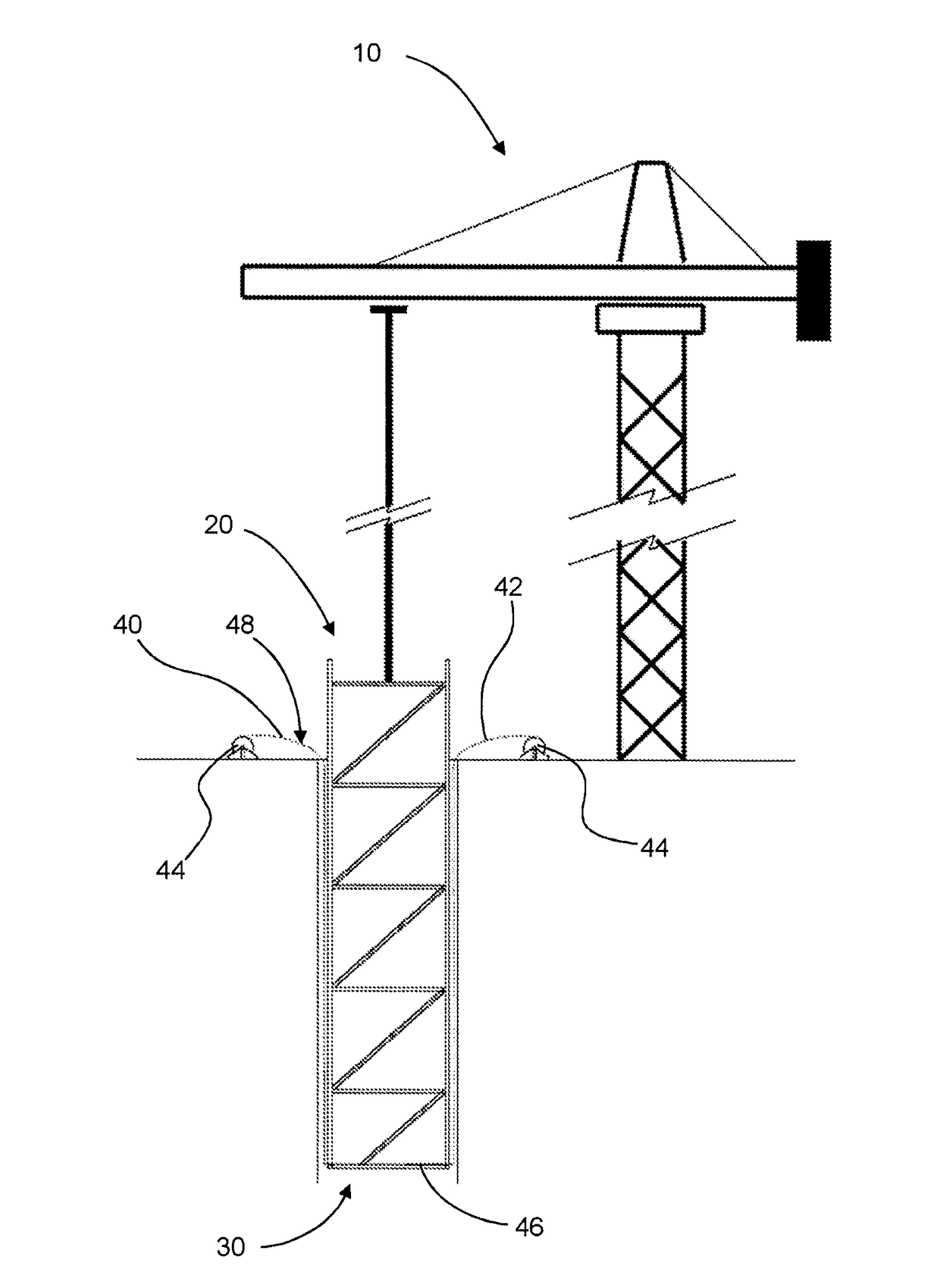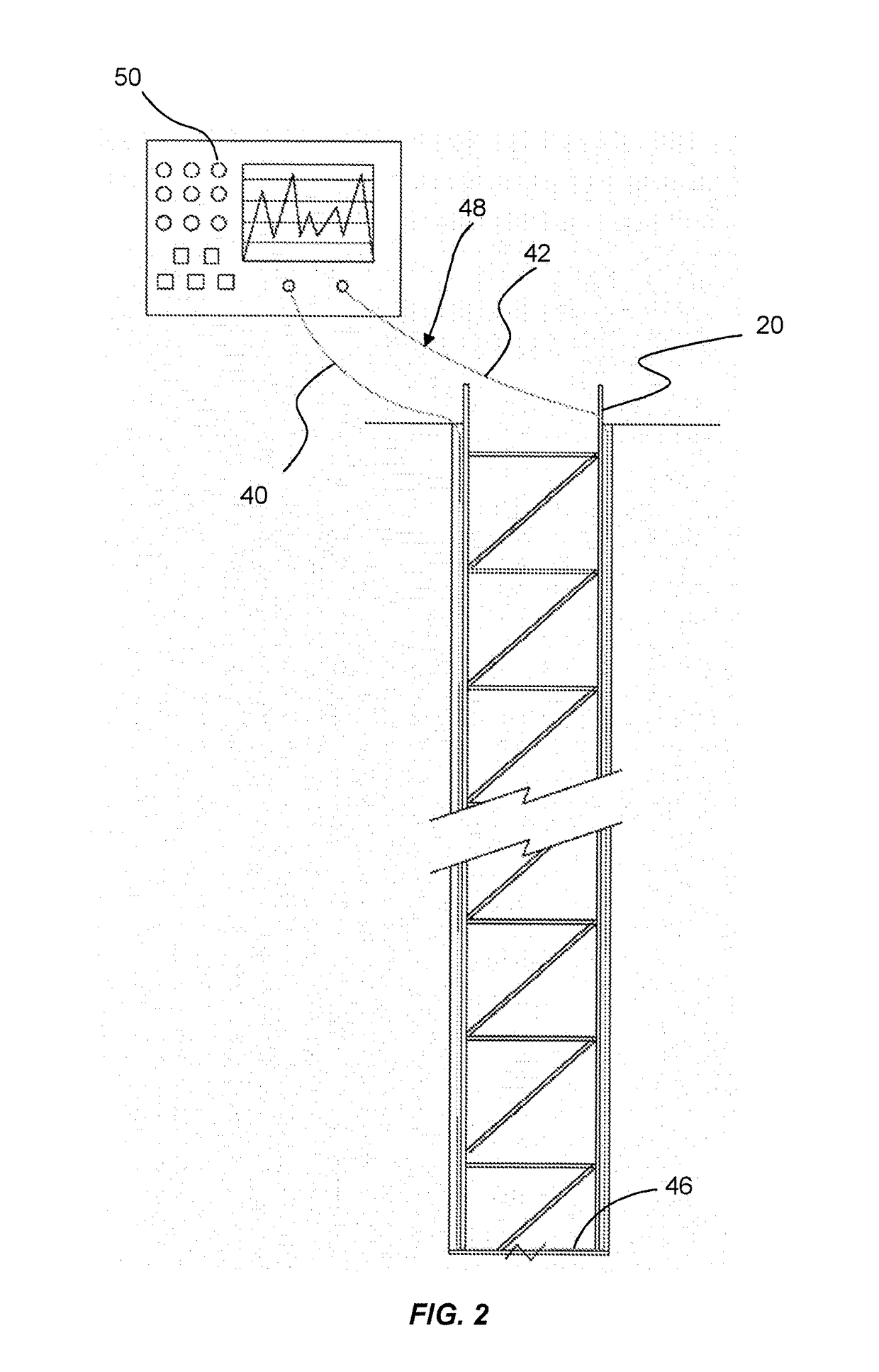Method of monitoring subsurface concrete structures
- Summary
- Abstract
- Description
- Claims
- Application Information
AI Technical Summary
Benefits of technology
Problems solved by technology
Method used
Image
Examples
Embodiment Construction
[0038]Referring firstly to FIG. 1, a crane or other suitable lifting device 10 is shown lowering a reinforcement or framework assembly 20 into a borehole or cavity 30 in the ground, for the purpose of creating a subsurface concrete structure.
[0039]Once the assembly 20 has been positioned at the desired location, concrete (not shown) is applied to fill the borehole or cavity 30, thereby surrounding the assembly 20.
[0040]In an alternative method, the concrete may be placed first, with the assembly 20 then placed into the wet concrete.
[0041]As will be understood, the concrete will undergo a period of hydration, during which the concrete will harden to create a subsurface concrete structure having integral reinforcement or framework.
[0042]The reinforcement or framework assembly 20 (hereinafter referred to as ‘the assembly’) is configured to define a substructure of the subsurface concrete structure to be created. As such, the assembly 20 may typically be constructed as a cage or frame, ...
PUM
 Login to View More
Login to View More Abstract
Description
Claims
Application Information
 Login to View More
Login to View More - R&D
- Intellectual Property
- Life Sciences
- Materials
- Tech Scout
- Unparalleled Data Quality
- Higher Quality Content
- 60% Fewer Hallucinations
Browse by: Latest US Patents, China's latest patents, Technical Efficacy Thesaurus, Application Domain, Technology Topic, Popular Technical Reports.
© 2025 PatSnap. All rights reserved.Legal|Privacy policy|Modern Slavery Act Transparency Statement|Sitemap|About US| Contact US: help@patsnap.com



